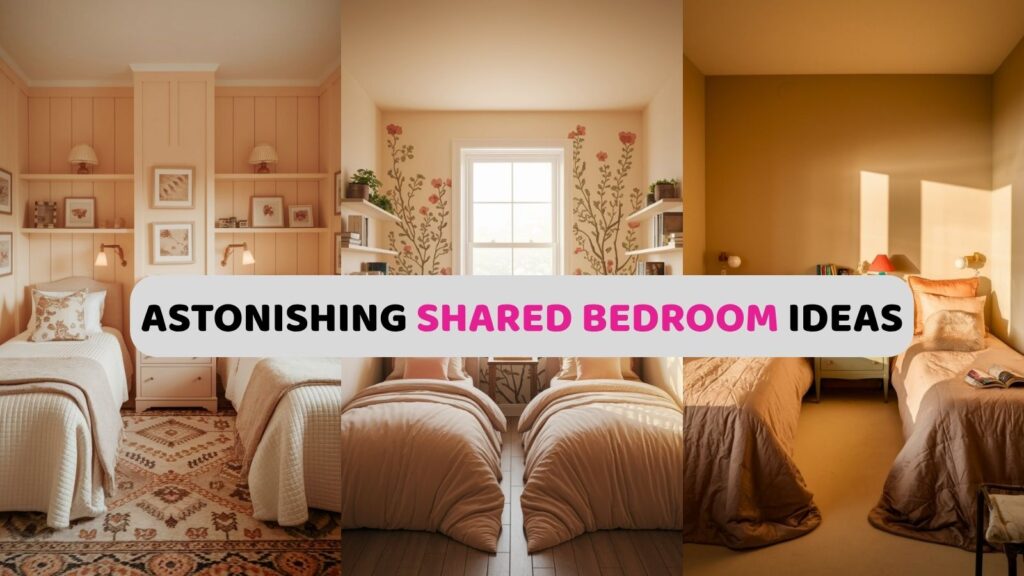Designing a shared bedroom doesn’t have to mean sacrificing style or sanity. Whether it’s siblings sharing a room, a dorm setup, or roommates making the most of one space, there are so many fun and functional ways to make it work beautifully. I’ve pulled together my favorite shared bedroom ideas that actually balance personality, privacy, and practicality. Trust me, your space is about to go from cramped to cozy-chic in no time!
Shared Bedroom Ideas
Sharing a bedroom means making room for both personalities without crowding the space. Thoughtful zoning and smart storage let you carve out your own corner while sharing the room harmoniously. Coordinating colors and decor creates a balanced vibe where both of you feel at home. You can have style, privacy, and comfort all in one shared space.
1. Create Defined Zones Within the Room
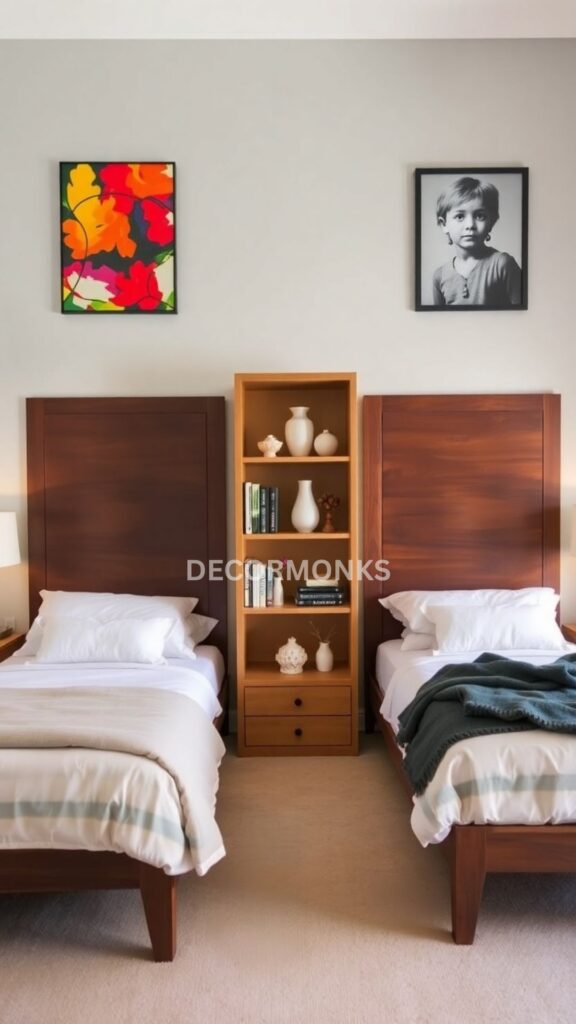
The key to a successful shared bedroom often starts with establishing personal zones. When two people share a space, they still want to feel like they have a little area to call their own. Creating defined zones allows for individuality within a shared setting, and it also helps avoid conflicts over clutter, noise, or design preferences.
Start by looking at the layout of your room. If it’s a rectangular space, consider placing the beds on opposite ends. This instantly gives each person their own corner to work with. You can separate the zones using visual dividers like a bookshelf, a curtain, or even a strategically placed desk. The goal isn’t to build a wall, but to create a psychological boundary that helps each person feel like they have some autonomy.
It also helps to mirror the furniture layout so both sides feel balanced. For example, each person could have their own small dresser or nightstand with matching lamps, giving the room a sense of symmetry while still honoring personal space.
2. Use Bunk Beds to Maximize Floor Space
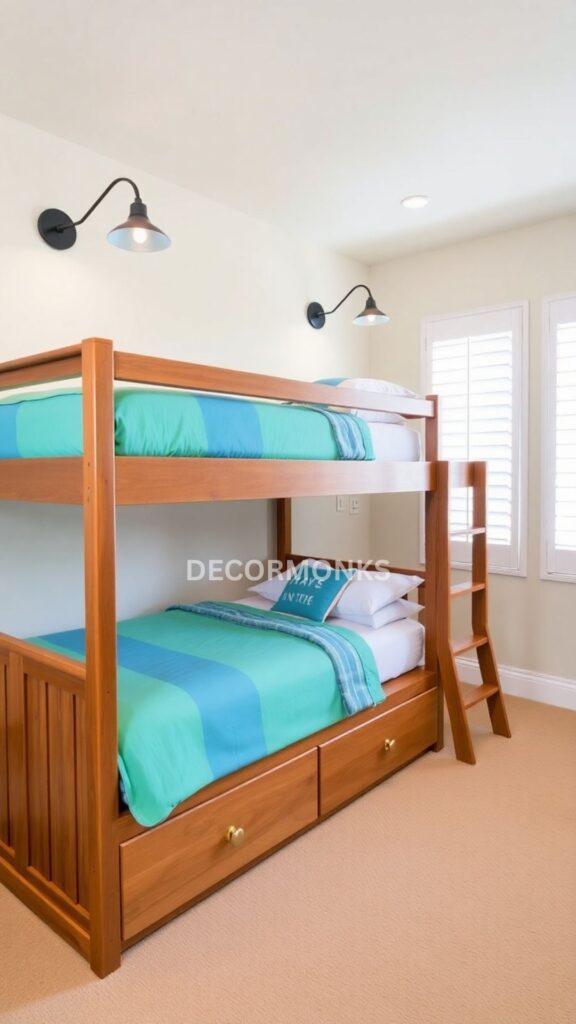
If you’re working with a small room, floor space is often your biggest limitation. One of the most effective solutions in shared bedrooms—especially for kids or teens—is to go vertical with bunk beds. Not only do bunk beds save square footage, but they also create a fun and cozy environment that many kids love.
Today’s bunk bed designs are more versatile than ever. Some come with built-in storage drawers, under-bed desks, or even loft configurations that leave the lower area open for seating or studying. When choosing a bunk bed, safety is key, so make sure the frame is sturdy and there are guardrails in place.
To add a sense of personalization, allow each occupant to decorate their bunk. Individual lighting, shelves, or fabric panels can give each person their own little world within the room. This kind of setup encourages independence while making the most of tight quarters.
3. Incorporate Shared Storage with Individual Access
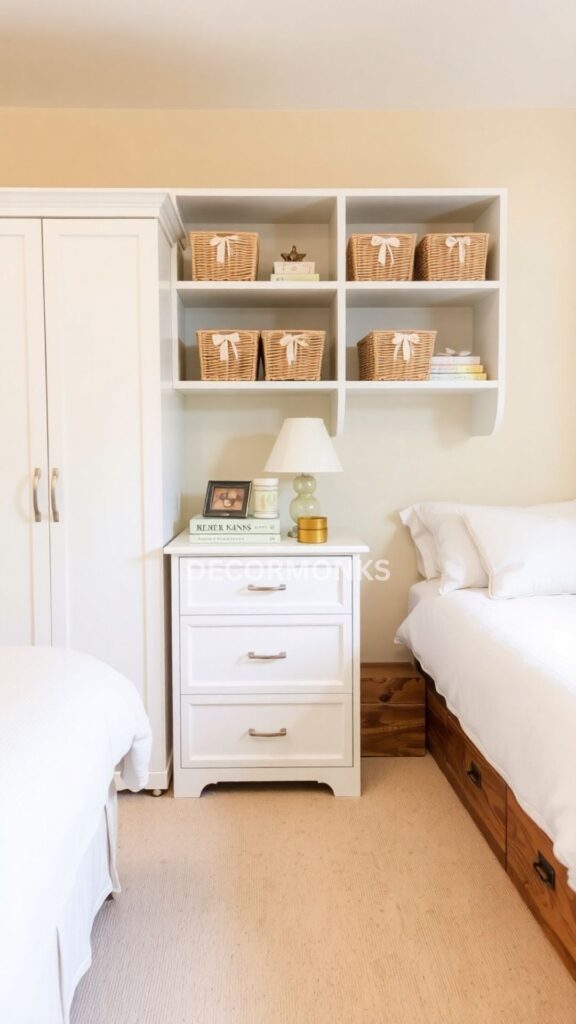
One of the most common challenges in a shared bedroom is managing storage. Without a solid system, things can get messy quickly—and that’s when the arguments usually start. The solution is to design shared storage that allows for individual access and ownership.
A long dresser with labelled drawers or dual closets with clear boundaries can help keep belongings organized and separate. Even open shelving units can be divided into personal sections using bins or boxes. If the room is small, consider beds with built-in drawers or rolling bins underneath to make use of every inch.
What matters most is clarity. Everyone in the room should know where their things go and feel like they have control over their own items. This not only keeps the room tidy but also creates a sense of fairness and respect, which is essential when two people are sharing one space.
4. Balance the Decor to Reflect Both Personalities
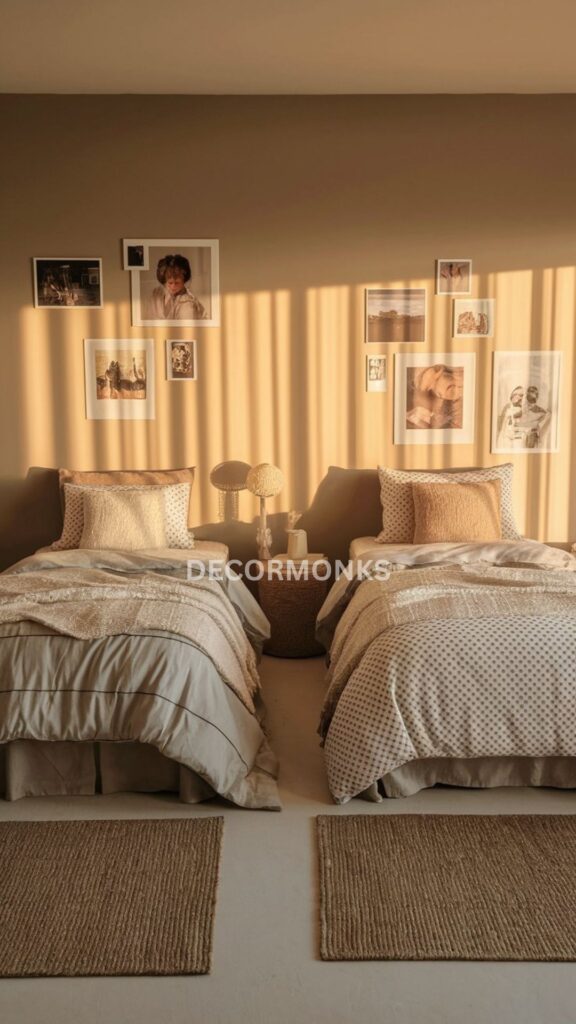
When two people share a room, there’s often a clash of styles. One might love boho neutrals, while the other is all about bold colors and patterns. Instead of forcing one design style on the entire room, find a way to strike a balance so each personality shines through.
A good starting point is to choose a neutral base—think white, gray, beige, or light wood tones—and then layer in personal elements on each side. This could mean different bedding sets, unique wall art, or color-coded accessories that reflect individual tastes without overwhelming the space.
Another option is to find a common theme or palette that both people like, and then allow for expression within those boundaries. For example, if you both love nature, one person might go with leafy green accents while the other focuses on earthy textures. As long as the room feels cohesive overall, there’s plenty of room for individuality.
5. Include a Shared Work or Play Area
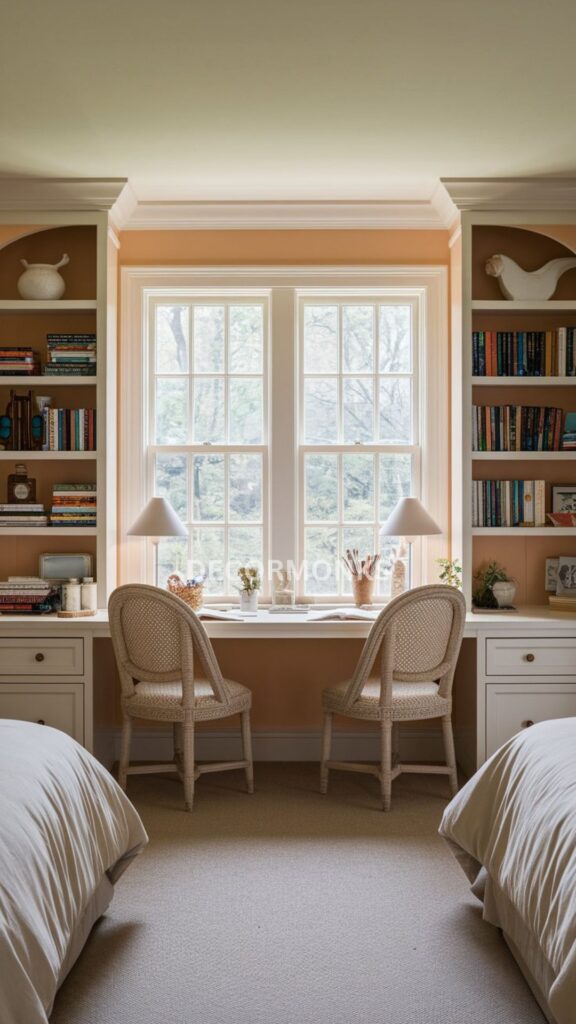
Finally, a great shared bedroom isn’t just about where you sleep—it’s about how you use the space during the day. If your room allows, try to include a shared area for work, play, or hobbies. This could be a desk where both kids can do homework, a corner reading nook with floor cushions, or a shared vanity for morning routines.
Creating a mutual activity zone helps bring harmony to the space and encourages collaboration instead of competition. It’s also a great way to maximize functionality in a small room. If one person is sleeping or relaxing, the other still has a spot to be productive or unwind.
Just be sure the shared zone is truly neutral—no one should feel like it “belongs” more to one person than the other. By keeping it accessible and friendly, it can become a favourite part of the room for both.
FAQs
What is the best layout for a shared bedroom?
The best layout depends on the room’s shape and size, but symmetry often works well. Placing beds on opposite walls or creating mirrored setups can give each person their own space while maintaining a balanced look.
How do you create privacy in a shared room?
Use furniture like bookshelves or curtains to divide the space subtly. Bunk beds with curtains, separate lighting, and personalized decor also help create a sense of privacy.
Can shared bedrooms work for adults too?
Absolutely. With thoughtful layout planning and design choices, shared adult bedrooms can be just as functional and stylish. Prioritizing organization and mutual respect goes a long way.
How do you make a shared bedroom feel fair for kids?
Ensure each child has equal access to storage, personal space, and choices in decor. Clear labelling, balanced layouts, and open communication help kids feel heard and respected.
Sharing a bedroom can come with its challenges, but it also opens the door to smart design and creative collaboration. With the right layout, personalized touches, and a focus on both functionality and fairness, a shared room can feel just as stylish and peaceful as any private space. Whether you’re decorating for kids, teens, or adults, these five ideas offer a strong foundation to build a space that truly works for everyone who calls it home.

